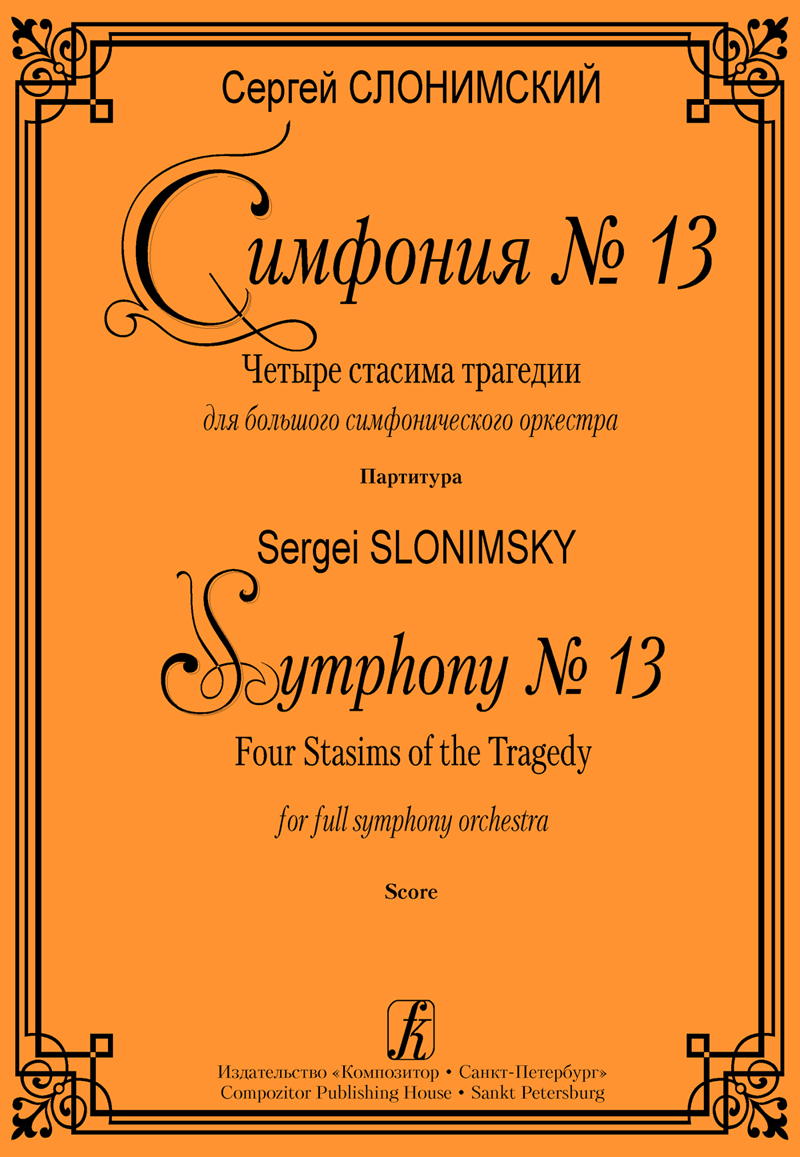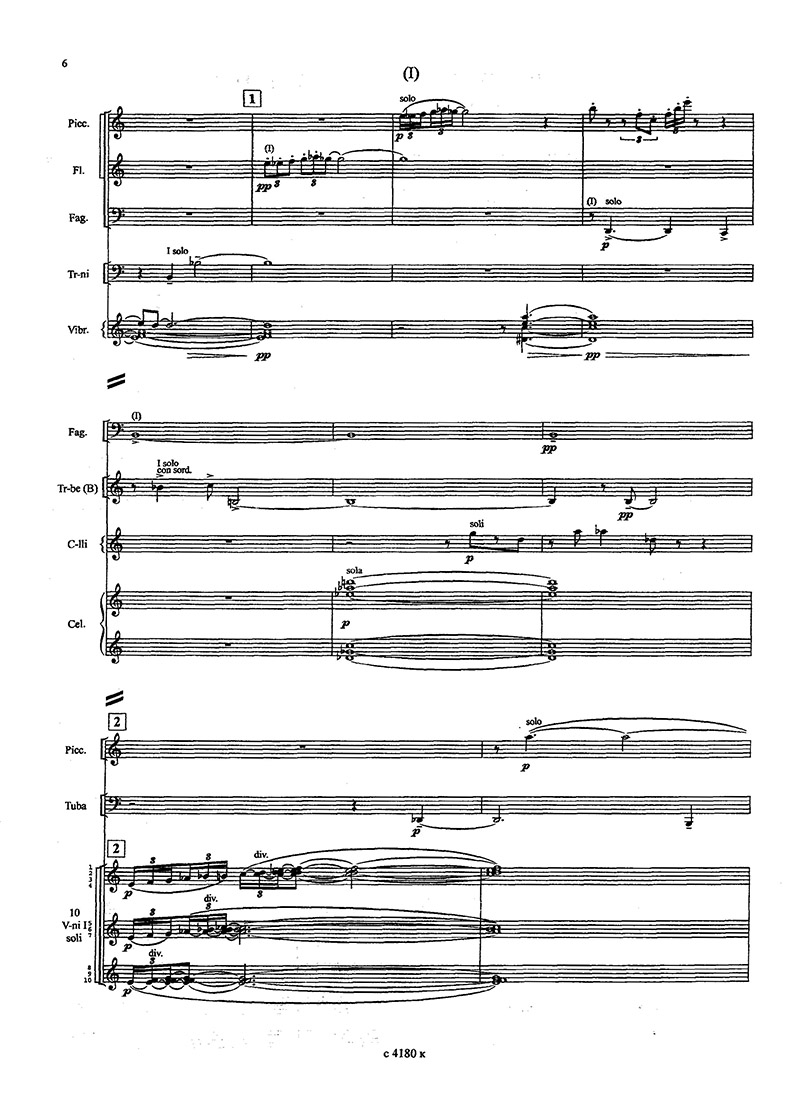
Slonimsky S. Symphony No 13. 4 Stasims of the Tragedy. Score
- Author:
- Slonimsky S.
- Author (full):
- Sergei Slonimsky
- Title (full):
- Symphony No 13. Four Stasims of the Tragedy for full symphony orchestra. Score
- Number of pages:
- 52
Sergei Mikhailovich Slonimsky (1932–2019) is one of the leading modern Russian composers. His creation embraces actually all the genres. Remember the musical drama “Virineya” (1965–1967) after the novel by L. Seyfullina, chamber opera “Master and Margarite” (1970–1972) after M. Bulgakov, opera-ballad “Mary Stuart” (1978–1980) to Ya. Gordin’s libretto, dramma per musica “Hamlet” (1990–1991) after the W. Shakespeare’s tragedy translated to Russian by B. Pasternak, chamber opera (monodic drama) “King Ixion” (1993–1995) after the ancient myth and the tragedy by I. Annensky, the Russian tragedy in 14 visions with three epilogues and overture “The Visions of Ioann Grozny” to Ya. Gordin’s libretto, dramma per musica “King Lear” (2000–2001) after the tragedy by W. Shakespeare translated by B. Pasternak, symphonies, instrumental concertos, cantatas, among which there is the “Voice From Choir” (1962–1963) to the verses by Alexander Blok, “One Day of the Life” (1998) to the texts by “Chapter of the Thousand” by Dhammapada translated by V. Toporov, Requiem for soloists, choir and symphony orchestra (2003), so as numerous choral, chamber-instrumental and vocal compositions. The spring of 2005 was marked by the ballet premi?re of the “Magic Nut” after the tale by E. Th. A. Hoffmann to the libretto by the artist Mikhail Chemiakine, who staged it in the Mariinsky Theatre. Sergei Slonimsky is the professor of the Petersburg Conservatoire, People’s Artist of Russia, laureate of the Russian State Prize, knight of the Commander Cross of the Order for Merits before the Polish Republic. Slonimsky’s opuses are on roll all over the world.
The Symphony № 13 by Sergei Slonimsky reveals the composer’s long-lasting passion for the Antiquity (topics, genres, emotional state, Grecian modes), however, originally expressed. Slonimsky addresses to Old Grecian motives in my compositions. Here are the unique texts: from the early ballet “Icarus” to the choral Four Stasims of Sophokles tragedy “Aedipes in Colon” (1983) and the “King Ixion” mentioned above. Here is the musical technique: “Monodia on the Reading of Euripides” for violin solo, the Sixth Symphony with melodic elaboration in the Locrian mode.
The ancient tragedy becomes the emotional kernal of the Thirteenth Symphony. The composition is not programmatic — but its four movements resemble the four acts of the Ancient tragedy, which gives birth to the instrumental theatre, so as the dramaturgic one. The imaginary Ancient world penetrates into the symphony in several ways. Monody prevails getting broad, linerar facture dominates along the vertical; antique monodic modes, including not only diatonic and chromatic (look the Greek roots of these words are accepted anew by us, though being so familiar for any musician), but also the archaic untempered pitch amalgamated with modern music technique (when archaic untempered pitch turns to modern quarter-tonal pitch). Emotional scale and the tonal scale of the symphony exist in absolute harmony. The movements are stern and laconic, expounded strictly and precisely, the whole development is directed to Finale — grandiose fugue ricercare, peak of the polyphonic technique, apex of contrasts, outburst of sound and tragical tension.
- Author
- Slonimsky S.
- Author (full)
- Sergei Slonimsky
- Title (full)
- Symphony No 13. Four Stasims of the Tragedy for full symphony orchestra. Score
- Number of pages
- 52


